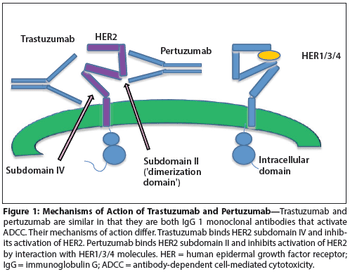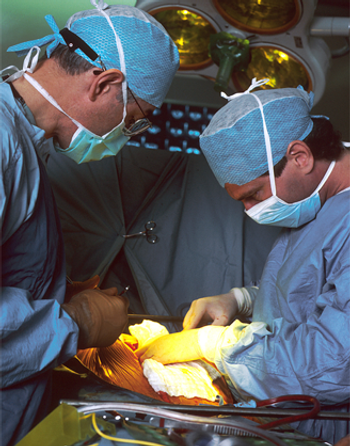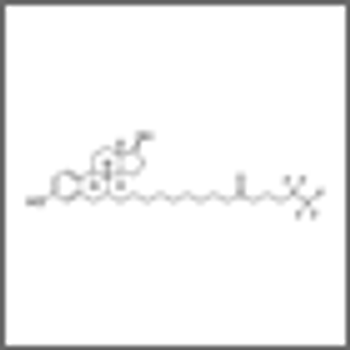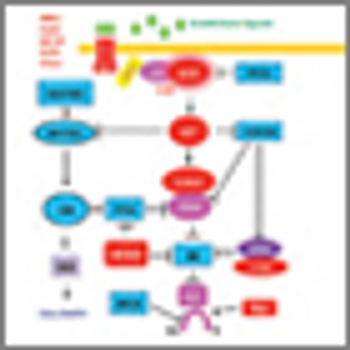
New guidelines supporting the broader use of sentinel lymph node biopsy in women with early-stage breast cancer have been issued by ASCO.

Your AI-Trained Oncology Knowledge Connection!


New guidelines supporting the broader use of sentinel lymph node biopsy in women with early-stage breast cancer have been issued by ASCO.

Contrary to some expectations, getting accelerated approval for neoadjuvant therapy does not look easy, and the pertuzumab story may be the exception that proves the rule.

At this point, there is expectation that pertuzumab given in the neoadjuvant setting will improve long-term efficacy. We welcome the opportunity to include pertuzumab in the neoadjuvant regimen of patients with HER2-positive breast cancer.

This article discusses the development of pertuzumab to date, with a particular focus on the accelerated approval decision. We highlight the need to identify reliable biomarkers of sensitivity and resistance to HER2-targeted therapy, which would make possible the individualization of treatment for patients with HER2-positive breast cancer.

Besides easing fatigue, yoga also eases pain and depression for women with breast cancer undergoing radiation therapy, a new study finds.

Researchers have reported the results of the first large-scale, whole-genome study of advanced breast cancer. The analysis of the sequences has resulted in identification of a subset of patients who have a higher chance of benefiting from specific personalized therapy.

SSO and ASTRO have released a new set of consensus guidelines that could reduce healthcare costs and improve treatment for women with breast cancer.

A new study shows that in some cases, inhibiting the growth of primary tumors can promote the spread of tumor cells to other parts of the body.

Management recommendations for breast cancer local-regional recurrence (LRR), including patient scenarios, are reviewed, and represent evidence-based data and expert opinion of the American College of Radiology Appropriateness Criteria Expert Panel on LRR.

A new study found that smoking increases the risk of estrogen receptor (ER)-positive breast cancer for young women.

Scientists have discovered that the injection of an engineered virus into triple-negative breast cancer cells may allow the cancers to be treated with therapeutic radioiodine, a treatment traditionally used to treat thyroid cancers.

In this Circling Back feature, authors of the review article “Adjuvant Endocrine Therapy for Breast Cancer: How Long Is Long Enough?” discuss some of the especially interesting points made in the commentaries.

The introduction of survivorship care plans for cancer survivors may not be a cost-effective use of scarce health care resources, according to the results of a companion study of a randomized controlled trial.

A new study found that more than half of all patients experience pain 12 months after surgery and adjuvant therapy for breast cancer.

Updated recommendations issued by the USPSTF state that primary care physicians should screen women who have a family history of either breast, ovarian, tubal, or peritoneal cancers for BRCA1 or BRCA2 mutations.

Beneficial compounds in tomatoes may help lower the risk of breast cancer for postmenopausal women, according to a new study.

Final overall survival results of a trial comparing fulvestrant doses found that postmenopausal women with metastatic, ER–positive breast cancer had a 19% lower risk of death when taking a 500-mg dose compared with a 250-mg dose.

A study aimed at defining the natural history of breast implant-associated anaplastic large-cell lymphoma found that outcomes differ between those cases where the disease is confined within the fibrous capsule surrounding the implant and those where a mass is present in the breast.

The so-called “carryover” effect of tamoxifen results in the reduction in recurrence continuing well after treatment has stopped. The carryover effect is seen mostly in the first 5 years after treatment cessation, and recent evidence suggests that after that time, it is largely over.

In the future, we also need to improve our ability to personalize the duration of endocrine therapy, with a goal of optimizing patient selection for extended therapy. Hopefully, clinical-pathologic indices and predictive biomarkers similar to the Oncotype DX 12-gene recurrence score or the PAM50 risk of recurrence score for adjuvant chemotherapy will soon emerge to guide adjuvant endocrine therapy.

The strongest aspect of TCGA is that the data are publically available, fueling the input needed for unparalleled discovery. As the broader scientific community continues to analyze and integrate TCGA data with their own datasets, it is highly likely that breast cancer patients will benefit.

TCGA’s efforts to dissect the genomic complexity found in breast cancer patients represents only the beginning of a journey toward better understanding of the intricacy of the events that lead to this disease. Additional efforts are required to provide tailored and effective therapeutic interventions.

This article aims to provide an overview of The Cancer Genome Atlas findings, with a particular focus on their potential biological relevance and therapeutic implications.

New evidence now supports improved recurrence and breast cancer mortality outcomes with continued tamoxifen for up to 10 years in women of any age, and such long-duration therapy is especially important for women who remain premenopausal after their first 5 years of tamoxifen.

Can knowledge of a patient’s breast tumor genome help select the optimal treatment, and when we have an effective treatment for a group of patients-in this case, for breast cancer patients in the adjuvant setting-how long should the course of treatment be?